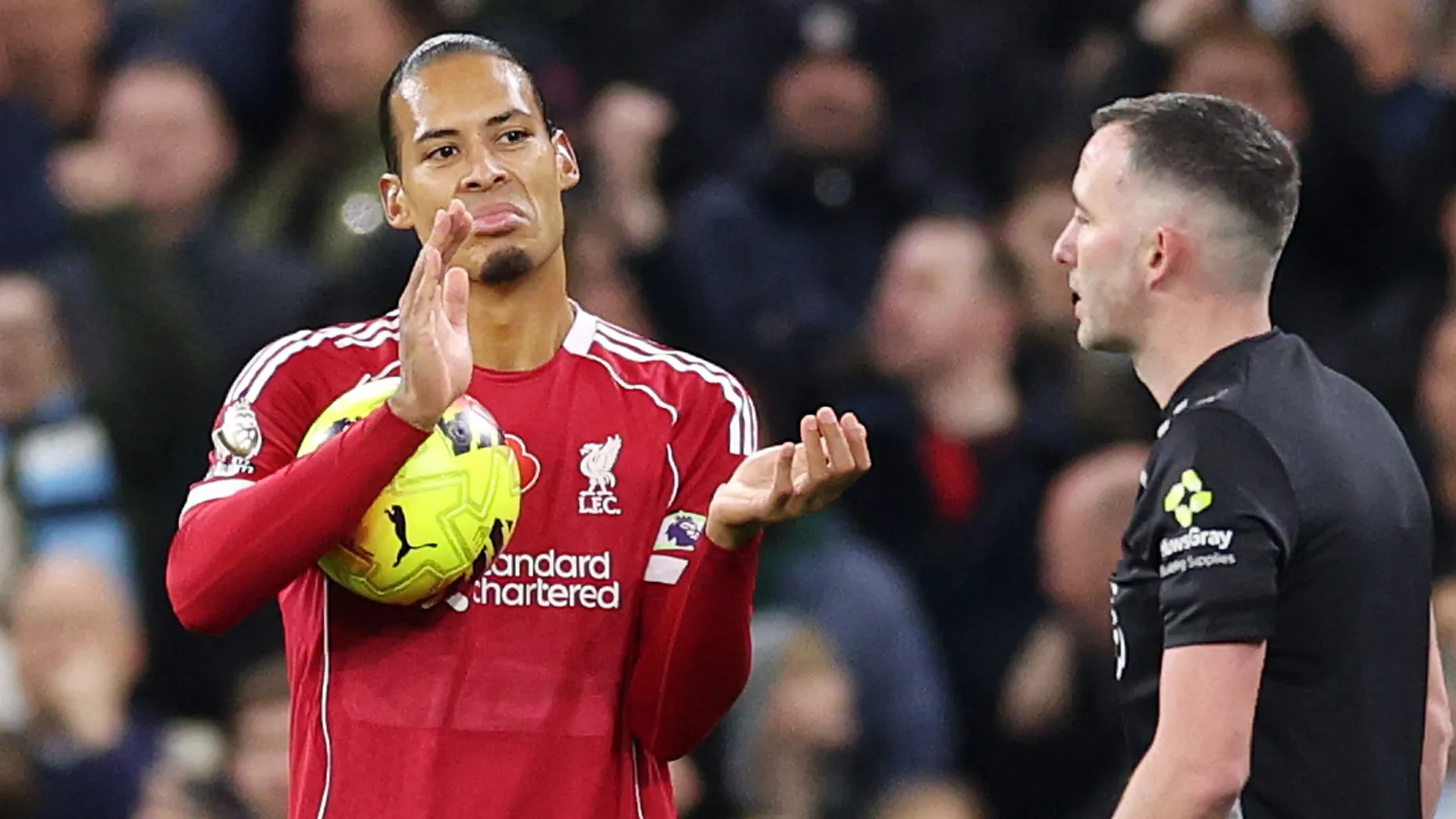Ref Watch: Why Liverpool’s Disallowed Goal Against Man City Wasn’t a Clear and Obvious Error – Dermot Gallagher Explains

Former Premier League referee Dermot Gallagher has explained why Virgil van Dijk’s disallowed goal in Liverpool’s 3–0 defeat to Manchester City was not considered a “clear and obvious error” under VAR rules — despite growing frustration from Liverpool, who have lodged a formal complaint with the PGMOL.
The Incident
Liverpool captain Virgil van Dijk thought he had pulled one back at the Etihad Stadium when he headed home a cross, but the goal was ruled out after Andy Robertson was deemed to be obstructing goalkeeper Gianluigi Donnarumma’s line of sight from an offside position.
Gallagher’s Verdict
“It is subjective without doubt and it’s a grey area because it’s all about interpretation,” Gallagher said on Ref Watch. “Everybody sees things differently — that’s why you can have similar incidents produce different outcomes. There are no hard and fast rules.”
Gallagher clarified that the on-field decision was “no goal,” meaning VAR would only intervene if it was a clear and obvious mistake.
“VAR asked, ‘Is Robertson in an offside position? Yes. Is he impacting the goalkeeper?’ They decided yes, as he was close enough to interfere. Since the on-field call was ‘no goal,’ it stood.”
He added that VAR is not meant to “re-referee” matches:
“The referee is only sent to the monitor if there’s a clear and obvious error or a subjective offside that needs review. In this case, VAR backed the on-field decision.”
Bothroyd’s View: ‘It Should Have Stood’
Former England striker Jay Bothroyd disagreed, arguing the goal should have been allowed.
“When you watch the replay, Donnarumma can clearly see the ball. Robertson ducks out of the way and doesn’t make an attempt to play it,” Bothroyd said. “If anything, [Man City’s] Doku is more in the keeper’s line of sight. Robertson isn’t interfering. It was a poor decision.”
Other Matches Discussed on Ref Watch
Brentford 3–1 Newcastle: There was controversy at the Gtech Community Stadium as Dan Burn avoided punishment for a challenge on Dango Ouattara in the first half, only to be sent off later for a similar foul. Gallagher said the first decision — no penalty and a yellow card for simulation — was “understandable,” but admitted the two incidents highlighted the fine margins referees face.
“There was contact both times. The referee judged the first to be minimal. VAR didn’t think it met the threshold for a penalty. It’s so difficult — that’s the life of a referee.”
Arsenal Women 1–1 Chelsea Women (WSL): The Women’s Super League clash produced several controversial moments, reigniting debate over the absence of VAR in the league. Stina Blackstenius had a goal ruled out for handball, though replays showed the ball struck her thigh.
“From the referee’s angle, it looked like handball. It was an optical illusion,” Gallagher explained. “If VAR existed in the WSL, the goal would have stood.”
Arsenal’s Victoria Pelova also escaped a possible red card for a high challenge on Keira Walsh. Gallagher said:
“At full speed, it looked like a fair challenge, but on slow motion, the studs are high. With VAR, that would likely be a red.”
Sunderland 2–2 Arsenal (Premier League): There was debate over Dan Ballard’s elbow on Mikel Merino in the box, and Martin Zubimendi’s yellow card for a midfield tackle. Gallagher said neither incident warranted VAR intervention:
“Ballard used his arms for leverage; it wasn’t a foul. Zubimendi was unlucky — probably a misread by the referee.”
The VAR Debate Continues
The series of contentious calls across the Premier League and WSL once again spotlighted the subjective nature of VAR decisions and renewed calls for consistent standards across all levels of English football.
“Refereeing has never been more difficult,” Gallagher concluded. “Every angle tells a different story — and interpretation is everything.”



